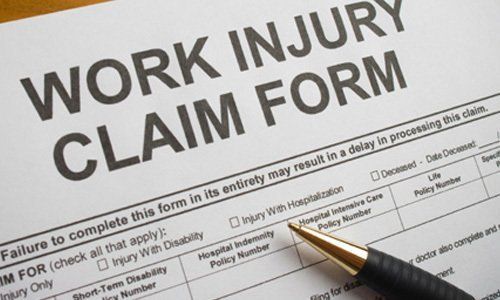Reducing Sprains and Strains in the Workplace
Protecting Your Employees from Injury with Pre-Evaluation Testing

In today's fast paced marketplace, production speed and project completion timing is critical. Labor-intensive industries such as warehousing, construction, retail, and manufacturing, are particularly reliant on the productivity of their human capital. While some employers may be tempted to expedite the hiring process and train new staff as soon as possible, when proper measures are not taken to ensure employees are physically fit to meet the requirements of the job, employees are more likely to suffer sprains, strains, and even more serious workplace injuries. Such avoidable injuries can cost an organization in both workers' compensation claim costs, and lost productivity. According to the 2012 Liberty Mutual Workplace Safety Index, in 2010, the number one cause of the most disabling work-related injuries, as well as direct workers’ compensation costs, was overexertion. Injuries caused by overexertion cost employers $13.61billion in 2010. Overexertion injuries include those caused from excessive lifting, pushing, pulling, holding, or carrying or throwing of an object. Employers who add post-offer physical evaluation testing to their new hire strategies are more likely to ensure that their employees are qualified for the physical requirements of the job and are less likely to suffer a costly workplace injury.
According to workers' compensation data, sprains and strains are the leading cause of workplace injury in the manufacturing industry. In 2011, the U.S. Bureau of Labor Statistics reported that 22 percent of workplace sprains and strains are caused by overexertion in lifting or lowering, with 36 percent of sprains and strains occurring to the back, twelve percent impacting shoulders, and another twelve percent impacting knees. Such injuries are avoidable with proper physical evaluations of job candidates prior to hire and job placement.
When qualified job candidates are identified during the new hire process, employers owe it to their organization, and to the candidate, to properly vet the applicant's physical qualifications for the job prior to extending an offer of employment. Hiring a candidate to perform a job in which they will be, for example, repeatedly lifting 50 to 100 pounds of force occasionally, without validating his physical fitness for such work, may put the new hire in a position where they are putting repeated force and strain on joints and muscles that cannot support such tasks. If the employee recognizes their inability to perform the job tasks with ease and comfort, they may choose to leave the organization, leaving the employer understaffed and absorbing additional costs associated with re-hiring and retraining. If they stay, they may underperform in their role, or overexert themselves in order to accomplish physical tasks, which could result in an overexertion injury such as a sprain or strain. In this scenario, the employee's injury could have been avoided, had they been properly job matched into a more physically suitable position during the new hire process.
Employers whose productivity is reliant on labor-intensive staffing, especially hospitals, manufacturers, warehouses, school districts, municipalities, and construction companies, have found that their rates of workers' compensation claims, and general workplace injuries, have decreased upon implementation of pre-employment physical evaluation testing. Employers that utilize the Physical Capacity Profile® (PCP) Test specifically, see a decrease in workers' compensation injury rates by 30 percent, as well as a direct savings to medical plan costs of $8 to $12 for every dollar spent.
A trained administrator typically administers the PCP Test in a hospital or urgent care setting. The PCP test requires the applicant to complete a variety of repeated physical activities that are captured electronically and measured objectively against standards defined by the American Medical Association (AMA) Guides and the Department of Labor’s Work Classifications. The PCP machine completes a collection of multiple strength measurements in approximately 30 minutes. The computer-generated output report summarizes what job level the candidate applied for, and what level he/she demonstrated during the test. The three-page report also indicates the applicant's maximum strength for 28 different measurements, and definitively validates if they candidate can meet the physical demands of the job.
While some employers have attempted to evaluate a candidate's physical job compatibility through other evaluation methods, the PCP Test has proven to be the most accurate in truly proving job task compatibility. Two such methods include a basic physician's exam, and a job task simulation. Physician's exams are typically treated as pass/fail tests, with the ultimate determinations being based on the subjective opinion of the reviewer. The exam results do not indicate what level of physical labor a candidate can perform, nor where he/she is best suited within an organization. Rather, their determination of suitability for physical labor is likely based on basic biometric health data, such as body mass index (BMI), cholesterol, blood pressure, and medical history.
A job task simulation is a tailored exam conducted by a medical professional that attempts to simulate the type of physical activity the individual will be doing if hired for a specific position. Like a physician's exam, a job task simulation is reviewed on a pass/fail basis or a graded scale determined subjectively by the reviewer. While a job task simulation does look to simulate the type of work that a candidate would be asked to perform if hired, it does not ask the candidate to demonstrate sustained or repeated activity. While a candidate may be able to perform a task one time, if not in proper physical condition for performing such tasks repeatedly during a 40-hour work week, the candidate may be at risk for an overexertion injury over time.
With PCP Testing, employers can validate that a new hire is physically fit to perform the tasks required of the position. With proper job matching, employees are less likely to suffer overexertion injuries, such as sprains and strains. In addition to protecting the safety and wellbeing of employees, proper job matching mitigates an employer's medical and workers' compensation claim costs as well as the impact of absenteeism, attrition, and re-training, all of which will make a significant impact to the bottom line.










